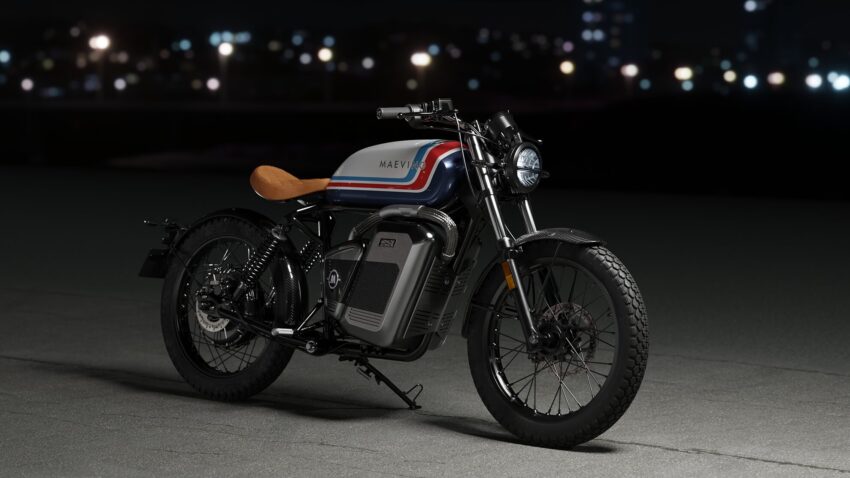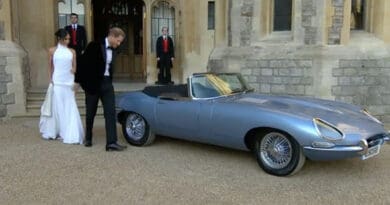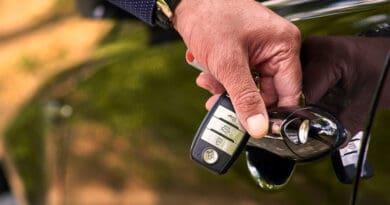
Make it a Maeving
In this exclusive feature, we speak to Seb Inglis-Jones, the co-founder of British electric bike brand, Maeving.Maeving was founded in 2017 with mission of creating a retro-style but British-built electric bike with swappable batteries, and Seb is here to tell us all about the bikes and how they are changing the EV market, whilst also providing an insight into the challenges facing the electric bike industry.
How was 2023 for Maeving?
I think for a lot of companies, let alone automotive manufacturers, it was a pretty tough year, with people having a little bit less money to spend and being a little bit more circumspect about buying new vehicles. But, nonetheless, it was a pretty huge year for us and we grew quite dramatically.
We moved into a factory that’s five times the size of our previous one. It was pretty exhausting. But when we finally sat back and reflected at the end of the year, it was it was pretty insane when we looked at the list of things that we have achieved.
Can you give us an overview of all of Maeving’s different models?
We are basically Britain’s first electric motorcycle manufacturer. We build electric motorbikes here in the UK in Coventry, the birthplace of the British motorcycle design industry. We currently have two models. The first was the RM1. This is a bike that’s made for city commuting and the best way to think about it is it’s like a 125cc motorbike or scooter. It has removable batteries that you can take out and plug in and charge the standard socket, which means you get around this whole challenge of charging infrastructure, which is really the biggest barrier to EV adoption. The first bike has a top speed of 45 miles per hour, so very much built for urban commuting, with 80 miles of range.
We launched the RM1S last year, and it’s one of our biggest achievements for 2023. It’s pretty similar in design, but importantly, it’s about twice the power and has a top speed of 70 miles per hour, so it brings electric riding within reach of people who might live outside a city centre and whose commutes might take them on short motorway spells as well.
What are some of the biggest challenges to the electric motorbike market?
Well it’s a slightly different landscape. When it comes to electrifying cars, you have the benefit of essentially being able to put as many batteries in as you feasibly can within the packaging constraints of that vehicle. So it’s no surprise, for example, that the giant SUVs and pickup trucks that are sort of hitting the roads in the US have the greatest mileage because they, in terms of sheer space, can pack a lot of batteries on them. And it doesn’t matter that they weigh two and a half, three tonnes, because they go 0-60 in three to five seconds because of the torque you can get out of electric motor.
In the two wheel space, you obviously can’t do that, as you can’t have a motorbike that weighs half a tonne. It’s obviously not manageable, so you’re dealing with a slightly different set of constraints. For that reason, you can’t really, at this stage in time with battery density as it is, get a comparable to an internal combustion engine bike because you just can’t feasibly pack on the amount of batteries that you need to deliver the same sort of mileage. And so for this reason, all the companies that have been focused on building high power kind of perf bikes or bikes that are trying to compete with touring bikes, it’s not really working. You’re ultimately creating something which is maybe twice the price of its actual counterpart and is only really delivering 60 miles or 80 miles of range and then you have to plug it in, so that’s really inconvenient. I think people are happy with the idea that you might get 250 miles in a car and then have to plug it in, but 60, 80 miles is just not long enough for a recreational motorcyclist. So there’s not really the case at the moment for a full-size electric motorbike.
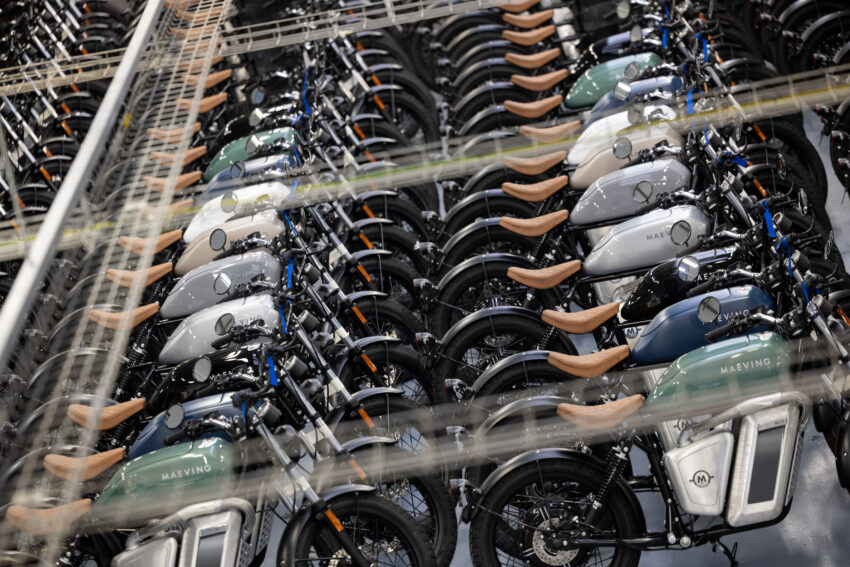
All Rights Reserved: RKP Photography
What does the current landscape of the electric motorcycle market look like?
The motorcycle market is behind the car market significantly. I think they’re maybe ten years behind in terms of the way that they think about electric and the importance of moving through electric. I think that’s in part because of what we were talking about with the packaging constraints, some of the limitations of the product you’re dealing with, but also because of the customer.
A lot of full-scale motorbikes are used for recreational riding. Motorcycle customers, certainly in the UK, the average age is about 53, overwhelmingly male. It’s a very different customer to your average car customer. And they’re not as interested in the EV transition as your average car customer is. And so, for all these reasons, you’ve basically got the major OEMs focusing on those more traditional customers and those more traditional products. So when they think about making an electric bike, they think about making a full powered electric bike broadly. For all those reasons, they’re kind of dragging their heels on this electric transition.
On the other side of the market, you have the Chinese-led market, and increasingly India and a few other countries. China is the foil to the traditional motorcycle market, and of course, it’s now China that’s beginning to lead the way in the electric car space as well. But it’s completely unparalleled in the two wheel world; they have had a electric revolution over there. They’ve got 80% electric adoption, and everyone is riding around on lightweight electric scooters with removeable batteries.
What makes Maeving so unique?
What we’ve tried to do is take that removable battery concept that we completely believe in. We think it’s extraordinary that no one here in the West has heard about removable battery scooters and motorbikes, and yet over in the East everyone is riding them and that makes so much sense. So what we’ve done is we’ve taken that technology but then we’ve gone: “The UK, one of the things that is truly renowned for worldwide in terms of manufacturing is motorcycle design, so we’re going to do this in a British way.”
We’ve focused on design and quality and we’ve basically created this segment which is slightly in between because it’s using that removable battery technology, but it’s, it’s calling upon motorcycle design that people absolutely love in the West.
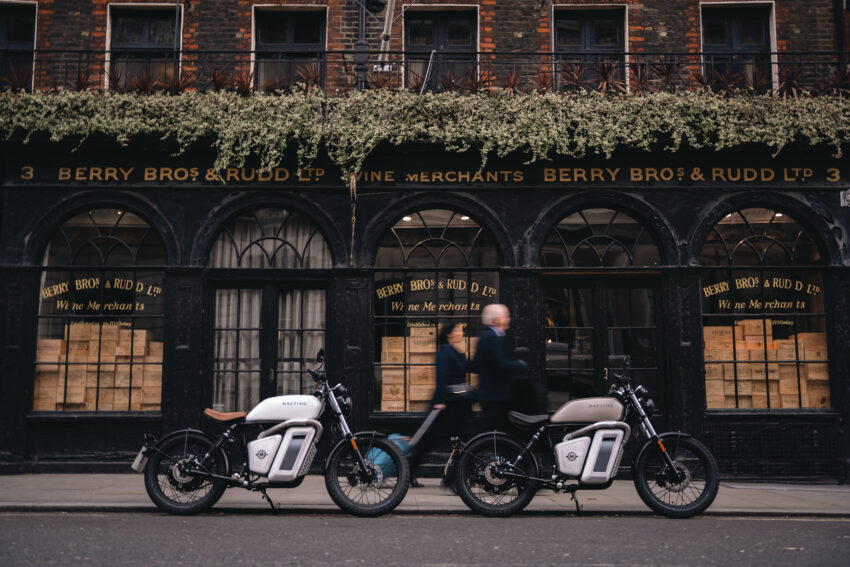
What is your audience? Are you trying to convince traditional ‘petrolheads’ to go electric?
It’s interesting. There are plenty of people in the motorcycle world who are really interested in and passionate about electric as well. A lot of motorcycle aficionados have multiple bikes, because bikes are more affordable. A lot of the time they’re owned by people who are slightly more passionate hobbyists. It’s not unusual for a bike to have three or five bikes, so we have lots of customers who are traditional motorcyclists that see our bikes as a really interesting addition to their collection. They might have a big BMW GS that they use for touring and they might have a sports bike that they use for cruising around the countryside on the weekends, and then they see us as a really sensible daily commuter that is easy to maintain, easy to manage, lightweight, maneuverable, all of those things that make sort of smaller capacity, lower capacity bikes and scooters easier to ride in urban areas in particular.
We do have plenty of customers who are traditional motorcyclists, but there are, as you’ve identified, for instance, plenty for whom a pulsing V-twin, the noise that comes out the back of the exhaust pipe, the oil, the smell, is really important. It’s a challenge to us to make products that are as engaging as their petrol bikes. I’ve also come from a petrol background. I love petrol and I love classic cars, love classic bikes. I totally get the romance around the combustion engine. I do. I also happen to think it’s really important that we move to electric to save the planet, so I think the onus is on us to make really compelling products.
How do you best describe the feeling and sensation of being behind the wheel of a Maeving electric bike?
I would say I’m biased, but I don’t think I am. I think anyone who has ridden a motorcycle or a scooter will say there’s something magical about it. When you’re in a car, you’re comfortable, you’ve got the heater on, you’ve got climate control, you’ve got a lovely radio. For me, I think about driving as this cocoon of luxury and comfort and you’re in control of everything that’s going on. When you’re riding a bike, it’s much more simple. You probably don’t have headphones in, you’re very engaged with everything that’s going around. You can feel the wind in your helmet. It’s a much more engaging experience.
I would challenge anyone to give biking a go and say: “no, it’s not for me.” I think you instantly feel special and it feels like a much more engaged experience.
